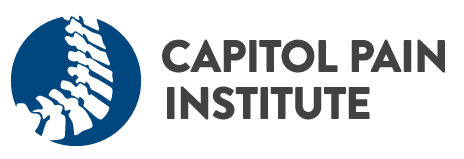Spinal Cord Stimulation
Spinal Cord Stimulation (Neuromodulation) is a treatment that controls pain by using electrical current to treat a nerve – like a “digital drug.” With this treatment, small electrodes are placed under the skin and close to a nerve that carries pain signals. The electrical current then interferes with the pain signal reaching the brain, resulting in significant relief of pain and improvement in activity levels and quality of life.
IS SPINAL CORD STIMULATION (SCS) RIGHT FOR ME?
WHAT CONDITIONS DOES IT TREAT?
Patients selected for this procedure usually have nerve pain for at least 6 months and more conservative therapies including injections, medications, and physical therapy. Often, patients have had surgery which has also failed to control their pain. The most common diagnoses for spinal cord stimulation are:
- Failed back surgery syndrome (post-laminectomy syndrome)
- Complex regional pain syndrome (reflex sympathetic dystrophy)
- Lumbar radiculopathy (sciatica)
- Cervical radiculopathy (arm pain)
- Low back pain from degenerative disc disease or spondylosis
- Spinal stenosis
- Multiple sclerosis related pain
- Leg and foot pain
- Pain after hernia repair
- Thoracotomy related pain
- Post-herpetic neuralgia (shingles pain)
- Pain after amputation – stump pain or phantom limb pain
- Pain from spinal cord injury
- Arachnoiditis
How does Spinal Cord Stimulation work to control my pain?
The electrical current interrupts the pain signal from reaching your brain. Since we actually feel pain in our brain, if the spinal cord stimulator can reduce or eliminate the transmission of pain signals to the brain, you will feel less pain. This will usually allow you to increase your activity levels and may allow you to decrease your dependence on pain medications. Some examples of types of SCS are traditional, Burst DR stimulation, high-frequency stimulation (HF-10), Dorsal Root Ganglion (DRG) stimulation, and Illumina 3D stimulation. Your doctor will work with you to determine which neuromodulation treatment will work best to treat your condition and pain level.
PREPARING FOR TREATMENT
WHAT SHOULD I EXPECT DURING THE PROCEDURE?
A spinal cord stimulator has 2 parts, the electrodes that deliver the current to the nerve (sometimes called leads) and the pulse generator (sometime called the battery).
The trial procedure:
The best thing about spinal cord stimulation is that there is a non-implanted trial period to determine if spinal cord stimulation therapy will be successful for you. During the trial phase, the stimulation electrodes are temporarily placed (much like an IV) and are left in place for 3-7 days. During this time, the system will work exactly like an implanted system, but without any incisions or surgery. At the end of the trial period, the temporary leads are easily removed. If the temporary trial relieved your pain and helped improve your activity levels, then you would be a good candidate for implantation of a spinal cord stimulator.
The implantation procedure:
The actual implant is performed as outpatient surgery. The leads are placed the same way they are placed during the trial phase. Then, a small incision (less than 1 inch) is made so that the leads can be placed under the skin. A second, 1.5 inch incision is made below the waistline and a pocket is made beneath the skin for the battery. The leads are then connected to the battery and then the incisions are closed. Once the surgery is complete, the entire spinal cord stimulation system is under the skin and usually not noticeable.
AFTER TREATMENT
WHAT CAN I EXPECT AFTER THE PROCEDURE?
The goal for spinal cord stimulation is a 50-70% reduction in pain. However, any amount of pain reduction can be significant if it helps you to perform your daily activities with less pain and/or reduces the amount of pain medication you need to take. The recovery period after implantation is fairly short. Most patients can shower within 48 hours and can return to work in 3-5 days. The incisions fully heal within 2 weeks. We ask our patients to limit bending and twisting for 4-6 weeks and then return to full activity by 8 weeks after surgery.
COMMON CONDITIONS TREATED BY SPINAL CORD STIMULATION (NEUROMODULATION)
- Post-Laminectomy Syndrome
- Sciatica
- Shingles
- Spinal Stenosis
- Degenerative Disc Disease or Spondylosis

